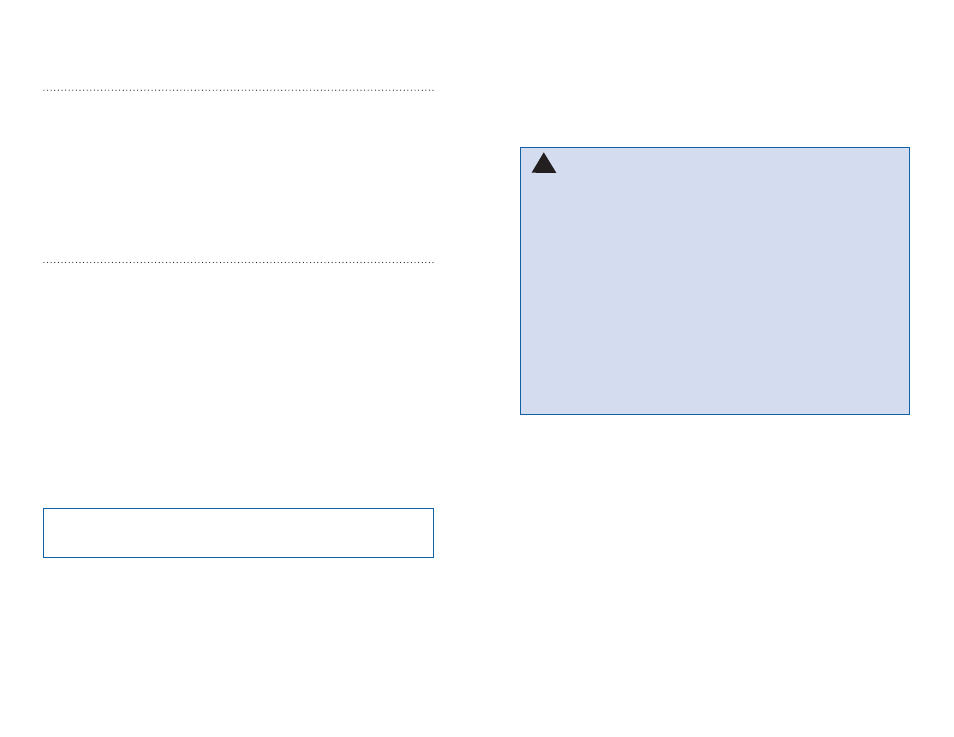Theory of operation, Using the kit, Selecting the protocol – Linx Technologies EVAL-xxx-DS User Manual
Page 5: Setting the address, Configuring the holtek protocol

–
–
–
–
4
5
Setting the Address
The address is made of ten inputs from the DIP switch, resulting in 1,022
(2
10
– 2) possible combinations. It’s important to remember that all switches
placed on or off are not valid addresses and are ignored. At least one input
must be different from the rest. Both the encoder and decoder board must
have matching addresses.
Configuring the Holtek Protocol
The Holtek configuration switches are only necessary when using the
Holtek protocol; they can be ignored when using the Serial protocol. These
switches determine the Data and Address bit types for the Holtek protocol.
It’s important that the encoder and decoder boards have matching
configurations. See the DS Series Data Guide for further details.
Theory of Operation
Encoder Evaluation Board
The transmitter board is powered by an on-board 3V CR2032 lithium
battery. It has eight SPST pushbutton switches, the states of which
are encoded into a data stream using the DS Series as an encoder. If a
switch is closed, the transmitter is enabled while the encoder captures the
pushbutton states for encoding and transmission. Buttons S0 (D0) is used
to activate a buzzer on the receiver board while the rest of the buttons
activate LEDs. All of the data lines are wired out to the header to the right
of the prototyping area and can be accessed for use with other switches,
contacts or microcontrollers.
Decoder Evaluation Board
The receiver board is powered by two AAA batteries. The data recovered
by the LR Series receiver is decoded using the DS Series as a decoder,
and the data line outputs are updated to match the states of the data line
inputs (or pushbuttons) on the transmitter board. To demonstrate this, one
data line is used to activate a buzzer while the other seven are used to
drive LEDs. This board also has a prototyping area with all of the receiver
and decoder lines brought out to a header.
Using the Kit
Using the kit is straightforward. Simply attach the antennas, turn on the
power, and press buttons on the transmitter board. When S0 is pressed,
the buzzer sounds; when S1–S7 are pressed, the LEDs turn on. When
any button (S0–S7) is pressed on the transmitter board, the corresponding
decoder output (D0–D7) is active high (V
CC
) on the prototyping header.
Selecting the Protocol
The DS Series encoder / decoder offers two over-the-air protocols. The
Holtek selection is used when communicating with other Holtek devices.
The serial selection offers a much more reliable protocol to allow better
range and response time. See the DS Series Data Guide for more details.
Note:
All switches
(address, protocol select and Holtek configuration)
must match on both the encoder and decoder boards.
Warning:
When designing remote control applications, it is very
important to use unique addressing between devices. This eliminates
opportunities for accidental triggering of unintentional devices within
range. For example, if next door neighbors have matching addresses
for their garage doors, each person would open both garage doors
when transmitting from a single remote controller. Likewise, suppose a
person shouts “John” in a room full of people. Each person named John
will respond. However, if the person shouts “John Smith”, only people
with the first same and last name will respond. For this reason it is very
important to set the address to a unique configuration.
Note: The DS Series has 10 address inputs which can be set to over a
thousand combinations. It is extremely important to mix up the address
logic, making the address more likely to be unique. Simple addressing
schemes, such as the first 9 address pins set to the same logic and the
10th address pin being inverted is NOT recommended.
!
